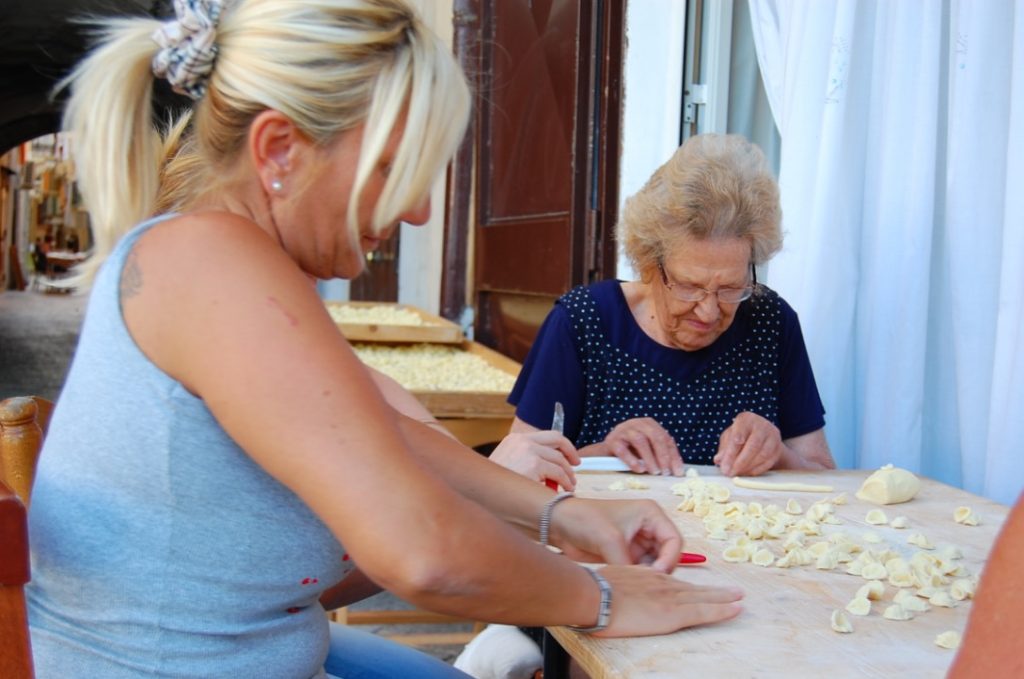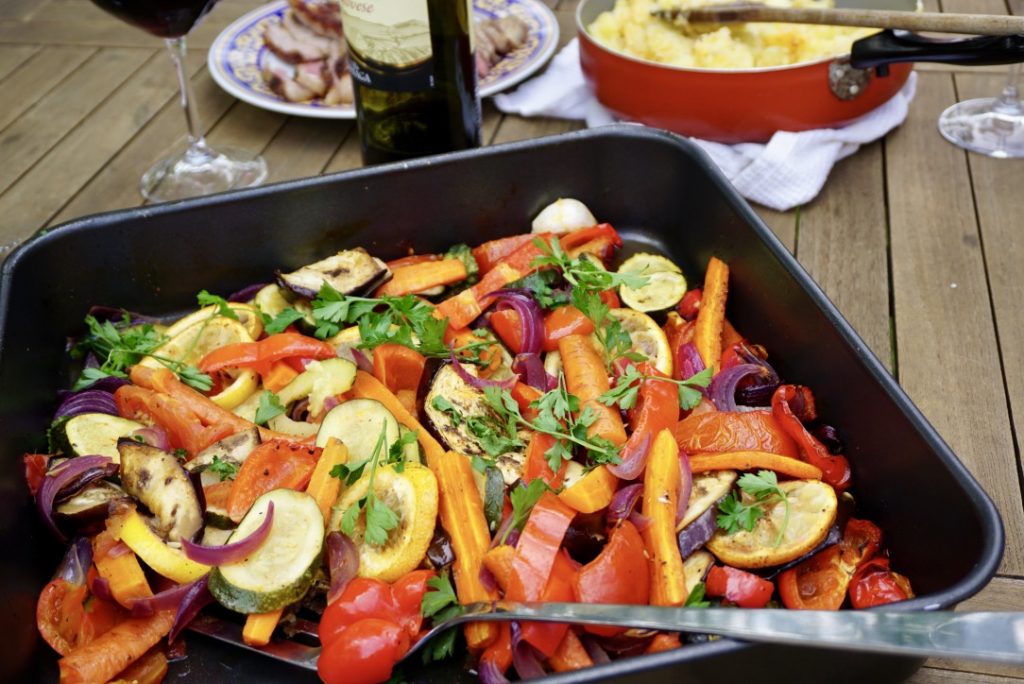How to Eat Less and Feel More Satisfied After a Meal
28 August 2023

LET ME READ THIS ARTICLE FOR YOU
Hi friends,
With our busy lifestyles, it is often a challenge to find time to cook and eat. We often need to prioritise daily tasks and it’s easy for meals to slip down the list.
What if I told you that slowing down to eat a meal is more important than adding more vegetables and eating wholemeal foods? How would you change your habits, if you knew that practising mindfulness at the table can significantly enhance the efficiency of nutrient digestion and absorption?
Mindfulness is being aware or bringing attention to this moment in time, deliberately and without judging the experience.
For me, mindful eating is about taking a moment to appreciate food and its impact on our wellbeing to optimise digestion, absorption and elimination of nutrients.
Eating ‘on the go’, whilst working, driving or watching the news, can promote low-grade stress, which, when experienced, slows down the work of digestive and immune systems to favour the work needed to respond to stress.
On the other hand, when we are present at the time of eating, we allow our bodies to calm down in preparation for the meal, e.g., by releasing digestive enzymes and bile. When we eat without distraction, we usually slow down and chew better, making it easier for our stomach to work its magic.
The chances are you will also eat less or feel more satisfied after a meal. This is because, by taking your time, the levels of leptin – the hormone responsible for signalling fullness – rise and communicate more effectively with the brain.

Now that you know about all the benefits of mindful eating, let me share with you how to introduce mindfulness to your table:
1 Assign 15-minute meal breaks in your daily calendar.
That’s usually enough to eat a meal mindfully — without rushing or responding to emails at the same time – that time solely dedicated to eating can fuel you with energy, vitality and strength, help you manage body shape, keep your mind clear and allow you to be active all day.
If you can extend your meal breaks to 30 mins, then even better! Use that additional time to gently move your body after a meal by going for a short walk or dancing. I know this may not be possible each and every day, so rather than strive for perfection or give up on this idea all together, try it at least 1-2 times a day and notice the difference!
2 Chew well.
I know, you heard it many times before, but did you actually try what it’s like to chew as long as needed to turn that steak into a mash? The more mechanically processed the food, the easier it is for the digestive juices to break it down into particles so small, that are easily absorbed into the bloodstream.
Next time possible, put the cutlery down to chew thoroughly before taking on another bite and observe if the food tastes any different, too. Additional bonus is that you’re likely to eat less by allowing the signals from your body to communicate satiety to your brain!
3 Eat up to a point when you feel pleasantly full.
Did you know that your stomach’s estimated capacity is as much as your fist? Of course, after being well-chewed! Try serving 30% less food than you normally would to see how much you actually need to stop feeling hungry. The chances are that once you slow down, your portion sizes will get smaller.
Don’t worry, there is always space for more, but how about you allow for a 10-15-minute break before reaching for second helping? (if you still feel like)
If you have a big appetite, try serving your meals on smaller plates – this way you may trick your brain and appetite as the portion size looks much bigger!
And finally, don’t be ashamed to ask for a takeaway bag or container at the restaurant – the leftovers will end up in the bin anyway so you may as well enjoy them the next day.

4 Pause before eating to question your motives.
Are you eating out of hunger, stress, boredom or simply because it’s available to you? And further, is the meal, snack or drink going to provide you with energy, make you feel good about yourself or will you regret it afterwards?
If you feel the need to snack, you might be seeking distraction from a difficult task or excitement in monotony. In this case, halt, step outside for a breath, stretch, play music, or have a tea. Alternatively, try brushing your teeth or chewing gum – the minty freshness may divert cravings.
5 Invite excitement and anticipation to the table.
Can you recall a memory of enjoying something that was particularly rare in your life? That feeling of enjoying an apple and blackberry crumble that only your grandmother could make? Or the taste of ripe and sweet peaches that you had on your first holidays abroad?
If you’re young enough to be brought up with an abundance of treats, then let me reassure you – we would have made the sweets last for as long as possible, sucking them slowly and carefully turning in mouth with delight. Once it was gone, we were waiting for another treat with anticipation. Why not create similar excitement about food today?
I believe there is always space for ‘treats’ in a well-balanced menu, and I find with myself and many of my clients that the more we appreciate them, the less tempting they become.
6 Bring joy and connection to the table.
Enjoying meals with others adds an extra, invisible ingredient to a meal by turning it into a special event. People always used to gather around the table and many celebrations happen with the food in the background, if not as a main feature!
I worked with many people who were used to eating on the sofa, in front of TV, also as a family. Once I encouraged them to sit at the table, they felt they created better relationships as dining together provided an opportunity to chat and learn about each other’s day. It is especially helpful in developing good eating habits in children.
But, here is one ‘but’ – refrain from difficult conversations and arguments. If you have children, let them enjoy the meal and don’t ask ‘how was school?’ If the day didn’t go quite so well, they will get nervous and you now know how stress affects digestion.
Sitting upright is also important to avoid indigestion and reflux. Our oesophagus – the long tube that transports food from mouth to stomach – enters the stomach on its side and requires a straight posture, otherwise you may feel that burning sensation in your chest long after a meal!
For nutrition & lifestyle tips and meal inspirations, connect with me on Instagram:
You may like these too
What You REALLY NEED When Expecting or Having a Baby
I recently met a friend who’s in her 32nd week of pregnancy and she asked me how to best prepare f
3 January 2024
Bogged down with a ‘bug’? Reflections on embracing and gaining insights from illness.
Hello Winter, the Season of Colds, Flus and other Ailments! Have you ever faced that unwelcome bug t
27 December 2023
How to Make the Most of the Festive Season
Christmas is just around the corner! We all have different plans and ways we enjoy or celebrate Chri
27 November 2023
Dear Mum, Are You Tired All the Time? Check Why!
One of the most overwhelming and debilitating parts of being a new mum is the tiredness that comes w
14 November 2023







